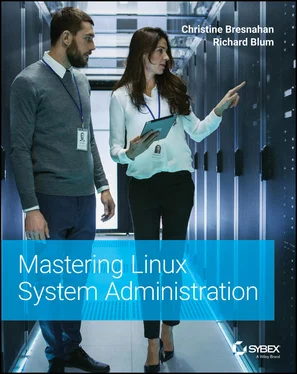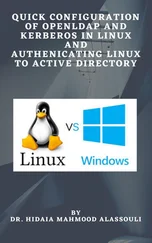You cannot just copy the file to the USB. Instead, you need a special software app that will burn the ISO properly. To find the right software, open your web browser and go to your favorite search engine. Type burn a bootable USBand press Enter. The resulting list will have several sites with instructions that point to free software. Once you have your Ubuntu Server ISO image file properly burned to a USB (or DVD) drive, you're able to boot your system and perform the installation process similar to what is covered in the next section.
Now that you've verified your copy of the Ubuntu Server ISO image file and downloaded the Oracle VirtualBox hypervisor software, you're ready to start the installation. We'll cover that process next.
To create an Ubuntu Server VM, you need to first install the hypervisor, Oracle VirtualBox. Once that software is up and running, you can set up and install Ubuntu as a VM using its ISO image file and the hypervisor.
The Oracle VirtualBox hypervisor software will allow you to do much more than set up Ubuntu Server as a Linux VM. You can also install another version of Windows within a VM and use it to try out features or configurations you normally wouldn't do on your main system.
 Real World Scenario
Real World Scenario
INSTALLING ORACLE VIRTUALBOX ON WINDOWS 10
If you have ever installed an app on Windows, the process of installing the Oracle VirtualBox hypervisor will feel familiar. It follows the typical Windows installation process.
1 Assuming you downloaded your VirtualBox software file to the Downloads folder, navigate to that folder and double‐click the software file. The file will have a name similar to the following, but with version numbers instead of # : VirtualBox‐ # . # . # ‐ ###### .exe.
2 Click the Next button in the VirtualBox Welcome window, which looks similar to the following:
3 If desired, in the Custom Setup window, make any modification you'd like. If you want to install VirtualBox using the defaults, just click the Next button.
4 In the second Custom Setup window, remove check marks from the boxes if you want to have fewer methods for accessing VirtualBox or no registered file associations. Click the Next button when you are done. If you want to keep the defaults, just click the Next button.
5 After reading the Warning window and you are ready to proceed with the installation, click the Next button.
6 You get one more chance to bail out of this installation. If you want to continue, click the Install button.
7 If you are not performing this VirtualBox software installation in an account that has administrator privileges, you will receive a pop‐up window asking for the administrator password. Enter the password and click the Yes button.
8 At this point, you will receive an installation status box that shows the progress of the VirtualBox software install, similar to the following:
9 After the software installation is completed, you'll receive a window letting you know that it is done. Click the Finish button to open the VirtualBox hypervisor app.
10 You should see a window showing the Oracle VirtualBox hypervisor interface, called the VirtualBox Manager, which looks similar to this:Congratulations! You have successfully installed the hypervisor software! You are ready to start the process of creating your Ubuntu Server VM.
If you need to take a break, close out the VirtualBox interface window by clicking the X in the upper‐right corner. However, if you want to plow on ahead, keep it open. We'll launch into installing Ubuntu Server in the next section.
Installing the Ubuntu Server as a VM may feel overwhelming the first time you do it, but as you complete the process a few more times, you'll feel more at ease. We'll help you through this initial instance to build confidence.
 Real World Scenario
Real World Scenario
SETTING UP AN UBUNTU SERVER CONFIGURATION WITHIN ORACLE VirtualBox
Prior to installing Ubuntu Server as a VM within the VirtualBox hypervisors, you need to perform a few basic tasks to create and configure a place for the new VM within the VirtualBox app. After you have completed these tasks, you will have a folder on your host machine for the new VM as well as two files within the folder: one file for the VM configuration information and one file acting as a hard disk for the VM.
Follow these steps to configure the VM. Though only a few steps are needed to complete this part of the installation project, they are important! So don't skim through this exercise.
1 Open the Oracle VirtualBox app on your host system. How this is accomplished depends on the configuration you chose when installing the VirtualBox software. You may have to find it via the menu search feature on Windows 10, or you can simply click the VirtualBox icon on the desktop or taskbar. Once you have the app open, you should see a window showing the Oracle VirtualBox Manager that looks similar to this:
2 In the VirtualBox Manager window, using the top menu within the window, select Machine ➢ New. This will start the process of configuring the Ubuntu Server VM and produce the Create Virtual Machine window.
3 Enter the name Ubuntu Server in the Create Virtual Machine window's Name box.
4 Click the Next button to reach the Memory Size window, which looks similar to the following:
5 By either typing in the memory setting box or using the up‐arrow button, change the Ubuntu Server memory to 2048 MB.
6 Click the Next button in the Memory Size window to reach the Hard Disk window.
7 Double‐check that the Create A Virtual Hard Disk Now option is selected. (You can tell that a particular option is selected by the circle next to it being filled with a dark color as shown in the previous figure.) If you need to select the Create A Virtual Hard Disk Now option, click the empty circle next to it.
8 Click the Create button in the Hard Disk window, which will open another configuration window called Hard Disk File Type.
9 Within the Hard Disk File Type window, ensure that the VirtualBox disk image (VDI) is selected.
10 Click the Next button, and the Storage On Physical Hard Disk window will appear. This configuration window looks similar to the following:
11 Double‐check that the Dynamically Allocated setting is selected.
12 Click the Next button to open the File Location And Size window.
13 Click the Next button, and the Storage On Physical Hard Disk window will appear. In this window, you will see where the VM's virtual disk file will be created as well as its size. This configuration window looks similar to the following:
14 Change the file size to 16 GB by typing 16 within the size box.
15 You are now ready to create the basic configuration and virtual disk file of the VM. Do so by clicking the Create button.You should now be back at the VirtualBox Manager window with the Ubuntu Server VM in the left pane, as shown here:We have a few more configuration items to accomplish before the VM is completely configured.
16 Click the Settings button in the VirtualBox Manager's top‐right pane, which opens the Settings window for the Ubuntu Server VM.
17 In the Settings window, click Network in the left pane to open the Network settings window for the Ubuntu Server.The next few steps help you to set up a second network interface card (NIC) on the Ubuntu Server. This allows your VM to act as an independent node on your network.
Читать дальше

 Real World Scenario
Real World Scenario










